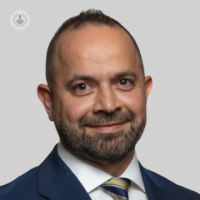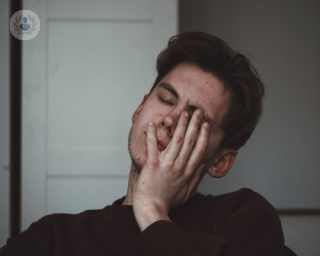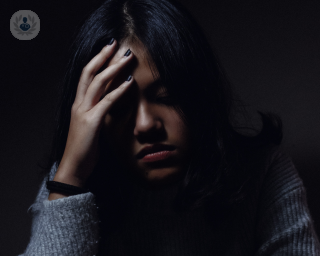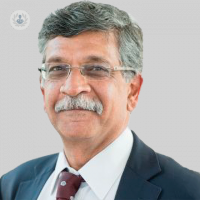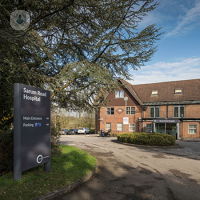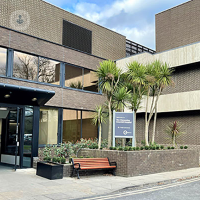Headache
Dr Husham Al-Shather - Pain medicine
Created on: 05-18-2017
Updated on: 02-14-2024
Edited by: Conor Lynch
What is a headache?
A headache is one of the most common day-to-day pains experienced by humans. Headaches come in different forms and vary in their intensity and symptoms. The most frequent types of headache are migraines, tension headaches, daily chronic headaches, and cluster headaches. Headaches can also be categorised into primary headaches (cluster, migraine and tension headaches) and secondary headaches (symptomatic of another condition).

What are the main symptoms of a headache?
The intensity of pain can vary from moderate to severe. Sometimes, the pain caused by a headache can become incapacitating for the patient. A headache may affect a specific area or affect the whole head.
The frequency of headache episodes is also variable, ranging from one to five a month. The duration of each episode does not normally exceed 24 hours.
What are the main causes of a headache?
Primary headaches result from problems in the pain-sensitive regions of your head and are not symptomatic of an underlying condition. Secondary headaches result from other conditions which have activated the pain-sensitive nerves in the head (e.g. sinusitis, tumour, concussion, dehydration, flu, infection).
There are also certain risk factors that can increase the likelihood of a headache forming and can include:
- heritage – most people who suffer from migraines have parents or siblings who also have them
- age – migraine in childhood is less frequent and occurs equally in boys and girls. However, from puberty it is more frequent in women
- stress
- food –chocolate, vanilla, nuts, citrus fruits, fermented cheeses and junk food additives, among others.
- alcohol and smoking tobacco
- hormonal changes – migraines worsen in women during ovulation and menstruation, as well as when taking oral contraceptives. During pregnancy it usually improves.
- climate changes
- lack or excess of sleep
- drugs
How can I avoid getting headaches?
Headaches cannot be prevented, but it is possible to reduce the likelihood of them developing by controlling risk factors. Some of the recommendations include:
- exercising regularly
- avoiding alcohol and tobacco
- avoiding drugs and caffeine
- eating a healthy diet rich in fruits and vegetables
- drinking plenty of water
- getting plenty of rest, particularly if you have the cold or flu
- taking medication such as ibuprofen or paracetamol
How are headaches treated?
Treatments for headaches vary according to the cause. If headaches are secondary (resulting from another condition), then they will usually resolve when the underlying problem is treated. Most headaches can be managed with over-the-counter painkillers. However, more debilitating headaches can be managed with preventative medication (e.g. beta blockers). Migraines will have their own treatment options.
Can headaches be life-threatening?
Headaches are not generally life-threatening, but can potentially be depending on the accompanying symptoms and the extremity of these symptoms.
When should I seek medical attention for my headache?
Patients should certainly seek immediate medical attention for their headache if they experience any of the following along with their headache:
- fever
- vomiting
- slurred speech
- drowsiness
- weakness in your limbs
- confusion
When is a headache considered to be a medical emergency?
A headache is considered to be a severe medical emergency when the patient is also experiencing symptoms that include jaw pain while eating, blurred or double vision, numbness or weakness in the arms and/or legs, and a sore scalp.

What are the most common headache triggers?
Alcohol consumption, a lack of sufficient sleep, and skipping meals during the day are the three most common triggers of a headache in the general population.
How do I know if I have a headache or a migraine?
Not all headaches are migraines, despite the fact that migraines are the most common form of headache. A migraine is the medical term that describes a headache that is almost always on one side of the head only. Migraine pain is normally described as being a throbbing pain, and nausea and/or vomiting, and sensitivity to light and sound are common symptoms of a migraine.
What is a cluster headache?
A cluster headache is defined as being quite a short-lived headache, that always occurs on one side of an individual's head. Symptoms such as a stuffy nose in just one nostril, an enlarged pupil, and a droopy eyelid, are commonly associated with cluster headaches.
What is a hypnic headache?
A hypnic headache is an extremely rare kind of headache that tends to usually occur in individuals between the ages of 40 and 80. The individual who experiences a hypnic headache will only experience it during the night, and it normally doesn't last longer than an hour.
What is a tension headache?
Tension headaches cause pain and discomfort around the forehead, temples, and the back of the head.
Am I at an increased risk of stroke if I suffer from frequent headaches?
Individuals under the age of 40 who suffer from frequent migraine-like headaches are at a slightly higher risk of suffering a stroke.
Are headaches hereditary?
Comprehensive medical research has shown that any given child has as high as a 50 per cent chance of suffering from frequent headaches if one of their parent's suffer from frequent headaches, and a 75 per cent chance if both parents experience regular headaches.
Which doctor should I visit for my headache?
It is advised that patients book an appointment with a general practitioner, who then may recommend the patient to a headache specialist, depending on the symptoms of the headache.
What is the difference between a primary and secondary headache?
A primary headache, importantly, as mentioned previously, is not a symptom of any underlying health condition, and is triggered by lifestyle factors such as stress, posture, sleep patterns, and alcohol consumption. The most common types of primary headaches include the following:
- migraine
- cluster headache
- tension headache
- chronic daily headaches
- cough headache
- trigeminal autonomic cephalalgia (TAC)
Secondary headaches, on the other hand, are a symptom of a potentially serious health condition, with the most common types including:
- dehydration
- brain aneurysm
- acute sinusitis
- blood clot in brain
- concussion
- ear infection
- glaucoma
- meningitis
- panic attacks
- stroke
